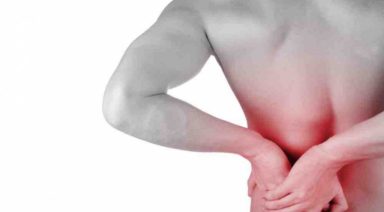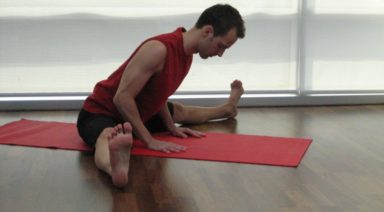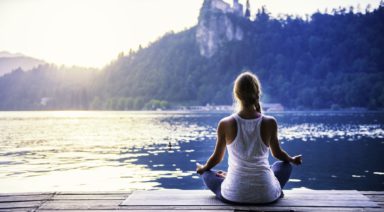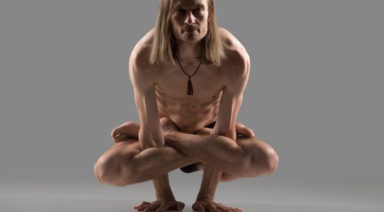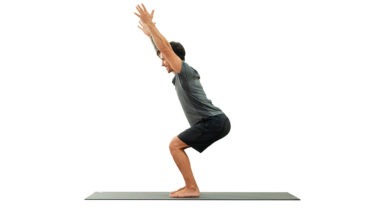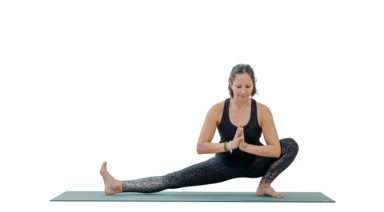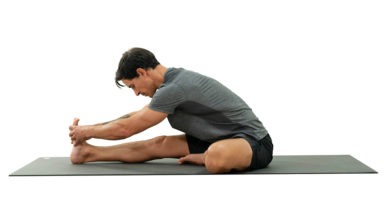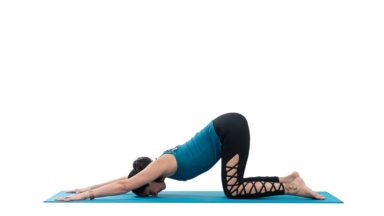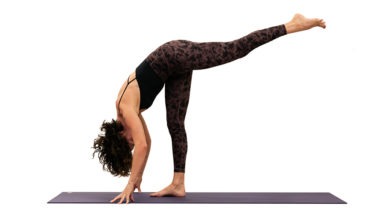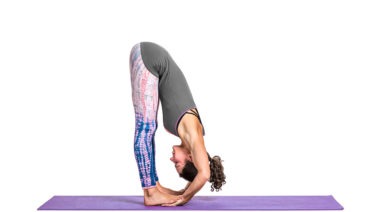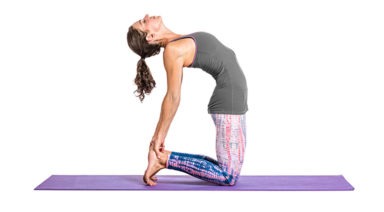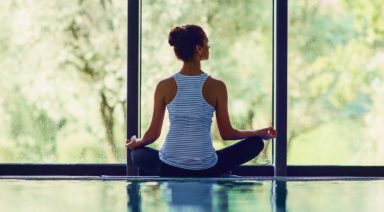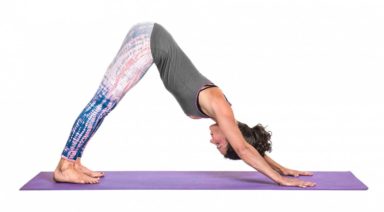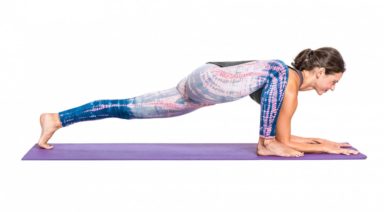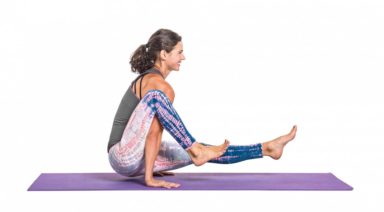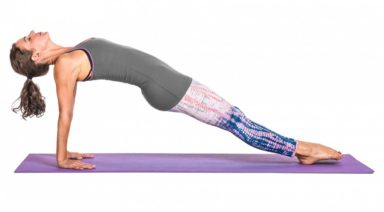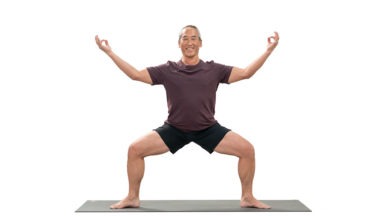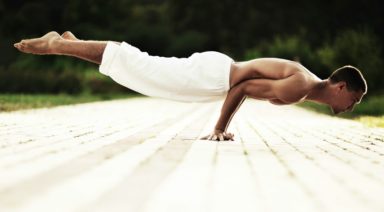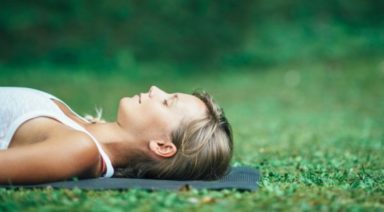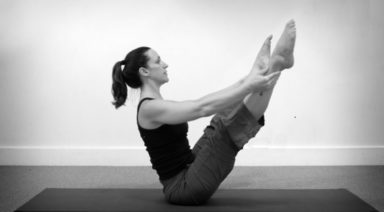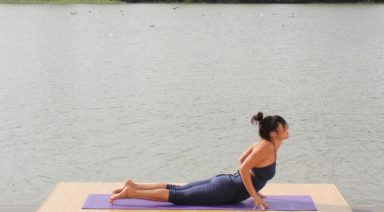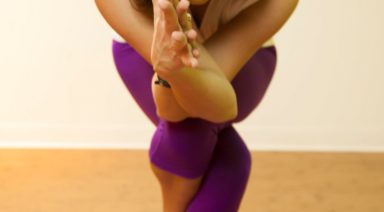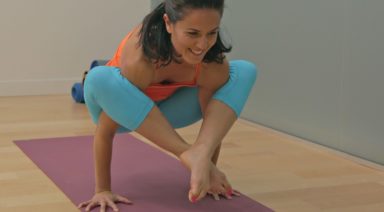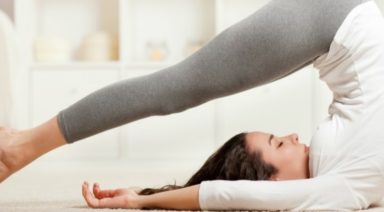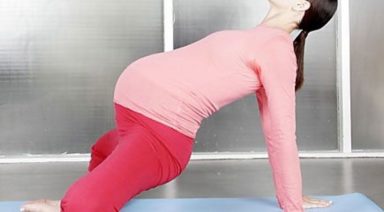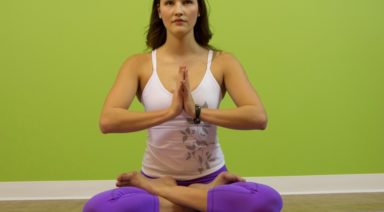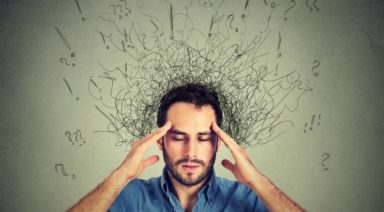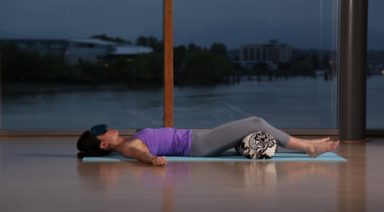Yoga and Anterior Pelvic Tilt

The anterior pelvic tilt is a hot topic in yoga and in manual medicine. Some people are overly concerned about the fact that their pelvis is tilting anteriorly without even understanding what it means. Let’s simplify the issues behind this increasingly common postural variation and learn how it can affect other parts of our body.
A normal pelvic angle is 30°; this means that our posterior superior iliac spines (the dimples above our bottoms) are slightly higher than our anterior superior iliac spines (the bones that stick out at the front of our pelvis). This angle can vary a few degrees either anteriorly or posteriorly due to our genetic makeup and even temporarily due to tight and/or weak muscles. An anterior pelvic angle of 40° is considered excessive and will produce a lower back (lumbar spine) curve that is also extreme. Our lumbar spine should have an anterior curve which is known as a lordosis; however, when this curve is excessive it is known as a hyperlordosis, which is not ideal. Cases of increased pelvic angles and lumbar hyperlordoses are very prevalent in today’s society.
Causes of increased lumbar lordosis include:
- Postural deformity
- Lax muscles, especially the abdominal muscles in combination with tight muscles, especially hip flexors or lumbar extensors
- A heavy abdomen, resulting from excess weight or pregnancy
- Compensatory mechanisms that result from another deformity, such as an increased curve in the thoracic spine (mid-back)
- Hip flexion contracture
- Spondylolisthesis (displacement of the vertebra above with relation to the vertebra below)
- Congenital problems, such as bilateral congenital dislocation of the hip
- Fashion (e.g., wearing high-heeled shoes)
Magee, J. David. Orthopedic Physical Assessment: Fourth Edition. Saunders. Toronto. 2002.
Cause number two from the list above is the reason that affects most. The majority of the population sits for at least eight hours a day while hunched over a desk at work; this can lead to a generic condition known as lower cross syndrome. This disorder consists of the following muscular issues: Weak or inhibited gluteal muscles and abdominals & Tight and shortened hip flexors and lumbar extensors
To better visualize this, observe the illustration that demonstrates lower cross syndrome. Take note of how the two weak/inhibited muscles create one line of the cross and the two tight/shortened muscles create the other line to complete the shape of a cross, hence lower cross syndrome.
When our hip flexors are tight, specifically our psoas, our pelvis rotates forward by the psoas pulling down on the lumbar spine from its attachment sites; this increases our lumbar lordosis and subsequently shortens our lumbar extensor muscles. This is most often seen in combination with weak abdominal and gluteal muscles.
Now that the reasons for this postural condition have been noted, the way to correct it is clear: reverse the causes. However, the distinction between inhibited muscles and weak muscles must be made first before rehabilitation can effectively begin. Inhibited muscles require the re-establishment of correct muscle firing patterns, while weak muscles need to be strengthened. Some individuals have weak muscles that are not inhibited; some have the reverse, and some have both issues to correct. Tight/shortened muscles require lengthening; sometimes stretching is sufficient and sometimes alternative soft tissue treatments such as Active Release Technique® and Graston Technique® are required to decrease scar tissue and increase the range of motion of the particular muscle.
If you are concerned that you may have lower cross syndrome, or simply a pelvic tilt, paying a visit to your manual health care practitioner (sports focused chiropractor, sports physician) will be well worth the time and money. They will be able to diagnose any underlying issues related to this condition and create an appropriate rehabilitation programs specific to the weaknesses and inhibitions they find upon physical examination. They will also be able to reduce scar tissue that may be contributing to your pelvic tilt (anterior or posterior).
Education is the ticket to eliminating these sorts of conditions from society. If we understand how to mitigate the risks for such generic conditions, we will all be much healthier individuals. Here is to learning more about our bodies!
Learn More about Dr. Carla Cupido.
Yoga Anatomy: Avoid Hand and Wrist Injuries
Think of the number of times your hands and wrists are connected to the earth and carry your weight in a typical Hatha Yoga practice. Like our feet, our hands frequently become a crucial foundation from which our postures build and express themselves. Sustaining mindful engagement of our hands will support a life-long practice that is free of negative stress conditions and injuries to the wrist. Let’s look at some anatomical aspects to give us empowerment and motivation to explore our unique positioning and engagement of the hands and wrists.
The wrists are formed by our 2 forearm bones (the radius and ulna). They meet dat the wrist joint where there is cluster of small bones (carpal bones). The carpal bones connect with 5 long bones (metacarpal bones) that make up the palm of the hand. From there, the metacarpal bones connect to the bones of the fingers (phalanges). The carpal bones form a tunnel through which tendons and nerve tissue pass to service the hand and fingers. One primary focus of hand engagement is to avoid collapsing into this tunnel and keeping excessive pressure from cascading into that track of muscle and nerve tissue.
One primary focus of hand engagement is to avoid collapsing into this tunnel and keeping excessive pressure from cascading into that track of muscle and nerve tissue.
Another key structural area to consider is the joint connection between the ulna and the carpal bones. If you turn your hand open (supination of the forearm and wrist), your ulna is the inside forearm bone (medial side). Unlike the radius (lateral or thumb side) that has a direct joint connection to the carpal bones, the ulna has indirect joint connection. Instead, there is a piece of fibrocartilage (designed to absorb stress forces) between the ulna and carpal bones along with a network of supporting ligaments – this area is called the Triangular Fibrocartilage Complex. When we look at the overall differences in joint connection, the radius also has a larger joint surface compared to the ulna. This gives indication that most people are best served to deliver a greater proportion of their force and energy through the radial side of the wrist than through the ulnar side.





